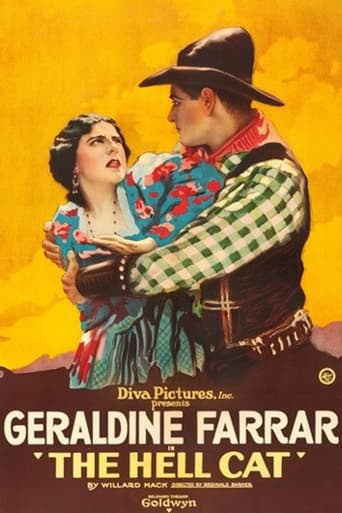Kodie Bird
True to its essence, the characters remain on the same line and manage to entertain the viewer, each highlighting their own distinctive qualities or touches.
wes-connors
"The best thing about Willard Mack's 'The Hell Cat' is the way that Geraldine Farrar photographs. She hasn't celluloided so well since 'Joan the Woman' (1916). Otherwise 'The Hell Cat' is a hectic story. Miss Farrar plays the Irish-Spanish daughter of an old ranchman. An untamed savage of a man is fascinated by her, murders her father, and takes her to his hut. Ultimately she avenges herself by plunging a dagger into the scoundrel's heart. And, of course, the man she loves comes to her in the end. So they start anew, forgetting the past."Director Reginald Barker and Mr. Mack have succeeded in getting thru 'The Hell Cat' without giving offense, but the story does not possess grip or punch. The best that can be said of 'The Hell Cat' is that it presents Miss Farrar to better advantage than she has been presented in some time. Tom Santschi as the villain and Milton Sills as the faithful lover have little real opportunity," according to writer Frederick James Smith in "Motion Picture Classic" (February 1919)."The New York Times" (November 25, 1918) reviewer was a little kinder to the "rampant melodrama." The film critic observed, "Miss Farrar is undoubtedly one of the best emotional actresses on the screen, and one who can look as handsome as any," and thought, "Milton Sills, Tom Santschi, and the others in the cast give her exceptionally good support." However, the 'Times' concluded, "The performance of all of the players and the manner in which the production is staged make it a pity that the play itself was of so little worth." The cast and crew of "The Hell Cat" were quickly seen in a dramatic follow-up, "Shadows" (1919). Unfortunately, neither of these lost films have been seen much over the next hundred years.***** The Hell Cat (11/24/18) Reginald Barker ~ Geraldine Farrar, Milton Sills, Tom Santschi, William Black

